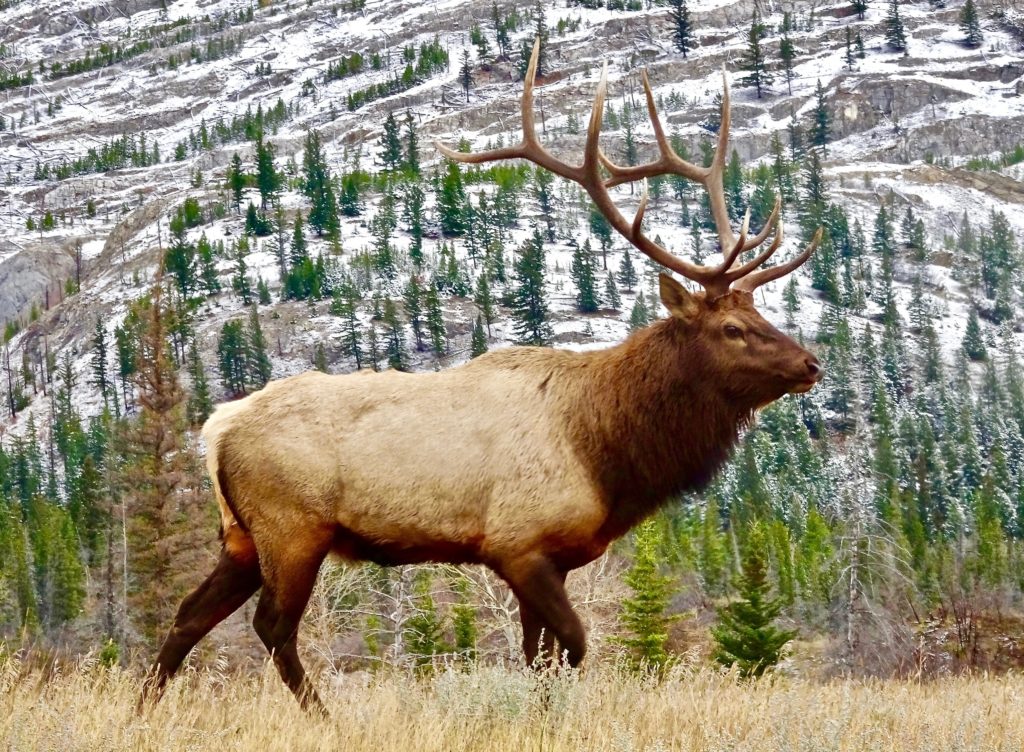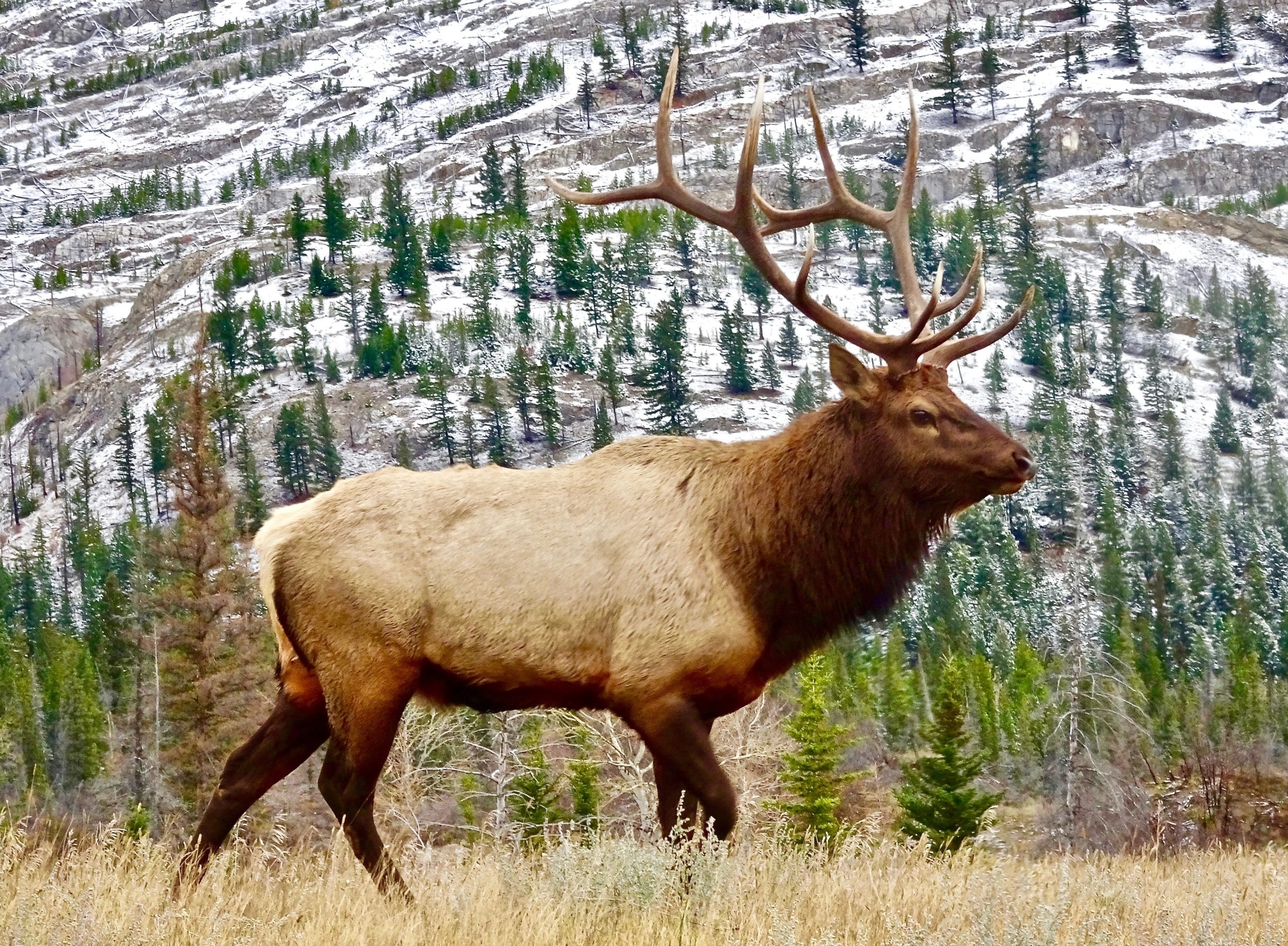ANIMAL: North American Elk Cervus canadensis Type of Animal: Deer Habitat: Forest edge, forests/woodlands of all types, mountains, semi-desert, plains, prairie, grassland, desert valleys & hills, meadows, suburbs, shrubland, steppe, foothills Location(s): Formerly found throughout much of U.S. & Canada. Now found in W. U.S & W. Canada w/ reintroductions into much of C. U.S, other parts of Canada, Appalachian region, a few islands in Alaska, & parts of Pennsylvania, Michigan, & Wisconsin. Appearance: Bull larger than cow & has antlers that shed yearly. Antlers hardest during rut (breeding season). Bulls have more well-defined neck mane. Copper brown in summer, light tan for rest of year, neck & legs darkest body parts, light beige rump patch. Food/Diet: Grass, bark, tree sprouts, forbs, twigs, shrubs, willows, aspen, clover, sedges, leaves, sagebrush, shrubs, seedlings, saplings, branches, lichens Status in Wild: Stable Conservation: Breeding from zoos, wildlife parks, & farms. Sometimes farmed for meat. Reintroduction into parts of former range. Lifestyle: Cows, calves, & juveniles found in herds of 20-50, sometimes up to 200, along w/ 2-5 bulls. Other bulls in bachelor herds of 10-25 animals. During rut, bulls gather harems of 20-25, (sometimes up to 60) cows. Additional Info: Called: Male-Bull Female-Cow Young-Calf Group-Herd/Gang Weight: Male-600-1,000lbs Female-300-600 lbs Young-175 lbs Gestation: 8.5 months Height: Male-5 ft Female-4.5 ft Body Length: Male-8 ft Female-6.5 ft Life Span: 13-15 years in wild, up to 20 years in captivity Main predators are wolves, coyotes, bears, mountain lions/pumas/cougars, & feral dogs. Bobcats & lynx only prey on calves. Fights between bulls during rut usually highly ritualized but sometimes antlers become locked & both bulls die of starvation Bulls very loud during rut, making bugle call. Older elk often have louder bugles. Fun Fact(s): Bulls lose lots of weight during fall rut since fighting & cows only things on his mind. When white settlers arrived in elk habitats, they would only hunt for meat/hide/sport & many Native Americans depended on these animals. Native Americans would use bones/antlers to make weapons, hides for war shields/shelter & teeth for necklaces/clothing decorations. Bones/hide also used in games. Were also hunted for meat. While relatively docile much of the time, it’s never advised to get too close to one (just like w/ any wild animal). Mothers protective of calves & bulls highly aggressive during rut. If you castrate a male deer, antlers become permanent since cycle based on testosterone levels. When levels highest, antlers hardest & when levels lowest, they fall off.

